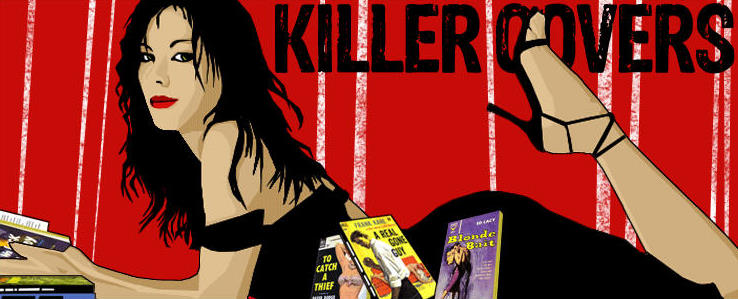

Temptresses tend to be pretty standard feature in espionage fiction, as these two look-alike paperback fronts appear to make clear. The cover on the left comes from the 1959 Corgi Books edition of Agent of the Devil. That novel was written by Hungarian-Austrian author-publisher János Békessy under his well-known pseudonym, Hans Habe. It was originally released in 1956 as Im Namen des Teufels (In the Name of the Devil), but was translated into English and first published in the UK two years later as Agent of the Devil. (I’ve also seen editions carry the title The Devil’s Agent.)
Sadly, the only write-up I could locate online about Agent of the Devil’s plot is this one from GoodReads, posted five years ago by a reviewer known as “Velvetink”:
Written in 1958, the New York Times hails Agent of the Devil as a “nerve-shattering spy classic.” Maybe in 1958 it shocked people. For 2010, it’s a bit ho hum. The author, Habe, was an intelligence officer during WWII for the U.S. Army in command of Psychological Warfare operations on the Italian front, and later a journalist, and he uses his knowledge of intelligence agencies a little too educationally here … [The book] is saved only by the character George Droste falling in love and his love for his adopted son.Credit for the illustration showing a woman in red, reclining before a presumed spy, goes to James E. McConnell, a British book and magazine cover artist known for painting historical and Old West scenes, though he also branched out to create the covers for science-fiction novels. The terrific blog Pulp Covers: The Best of the Worst offers a small collection of McConnell’s book art here.
You will probably recognize the front of Legacy of a Spy (right) as the work of Robert McGinnis, whose talents I showcased on this page last October. Can it be a coincidence that this Crest Book cover, like McConnell’s for Agent of the Devil, comes from 1959?
Legacy of a Spy was the debut novel by Henry S. Maxfield (1923-2013). A World War II airplane navigator, who later became a Central Intelligence Agency employee during the Korean War and eventually established himself as a real-estate broker in New Hampshire, Maxfield earned some critical plaudits for Legacy of a Spy, including this brief assessment by Kirkus Reviews:
Bill Slater, known as Montague, the best agent in U.S. counterespionage, here becomes Bruce Carmichael, when he isn’t Slater, to hunt down those responsible for the disappearance of Webber in the Consulate in Zurich, who suspects Wyman of betraying information. Slater is tricked by the first move …; attacks the enemy spy net organizationally; evades an assassin; skis to safety. Brisk.Furthermore, Legacy of a Spy was adapted by Hollywood in 1967 as The Double Man, an action flick set largely in the Austrian Alps, starring Yul Brynner and Brit Ekland. Maxfield went on to publish a second novel, Another Spring (1974), “about life in a small New Hampshire summer resort,” and followed that in 2007 with Justice Justice, about a newly elected U.S. president who, disappointed with the state of legal ethics, determines to appoint a non-lawyer, Bradford Justice, to the Supreme Court of the United States.







